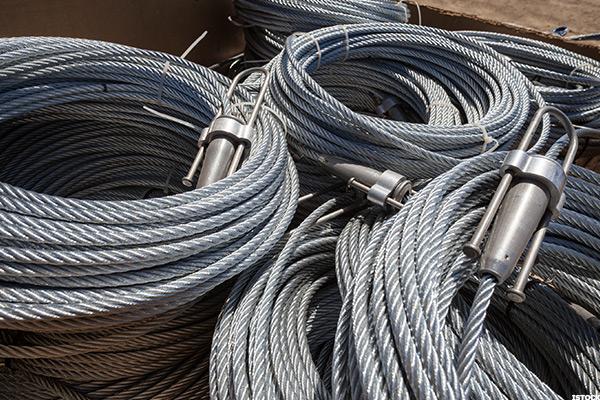This Is How China Is Punishing the Global Steel Industry

China uses an incredible amount of steel. It is the No. 1 steel producer, exporter and consumer in the world.
Currently China produces almost half the world's steel -- a big increase from just 10% in 2005. A little over 10 years ago, the U.S. produced 14% of the world's steel; it now only produces 4%.
Japan is the second-biggest steel producer in the world. But China exports more steel than Japan produces every year, and China only exports 3.5% of its production. As a result, China has a lot of control over the steel market. This causes problems for everyone else.
Over the past 20 years, China has been using billions of tons of steel to rapidly urbanize. It's needed massive amounts of steel to build rail lines, bridges, buildings and other infrastructure for its 1.3 billion people. Total worldwide steel production amounted to 753 million tons in 2005. That grew to 1.6 billion tons in 2014. (That's enough steel to build 30,000 Empire State Buildings.)
But China's economic growth has been slowing. Five years ago, its economy was growing at 10% a year; now it's growing at 6.7%. As a result, China's need for steel has also decelerated. The rest of the world's demand for steel has been slowing down too, as global economic growth has stalled.
China wants to keep its position as top steel producer, though. The industry employs hundreds of thousands of people and reducing production would mean a lot of unemployed workers. So, China is not reducing production and is now making more steel than the world needs.
The most steel that China has ever produced in a month was 70.65 million tons. In May, it produced 70.5 million tons. That's enough steel to make all the cars produced in the world last year.
The Chinese government is subsidizing steel production so Chinese steel producers can export at lower prices than other countries. This is known as "dumping." This dumping helped cause U.S. steel prices to drop 46% between April 2014 and December 2015.
Lower steel prices are good for buyers -- but not for steel producers. The practice of dumping has hurt the steel industry all over the world. Steel plants have in recent years closed in Mexico, Australia, the U.K. and the U.S.
The largest steel company in the U.S., United States Steel, lost $1.6 billion in 2015. It is reducing its workforce by about 25%. And steel workers in Germany have been protesting Chinese dumping for some time.
But in 2016 the market has been shifting. China's steel prices collapsed in April after starting the year strong. Meanwhile, U.S. steel prices have increased more than 70%. There's been a growing divergence between U.S. and Chinese steel prices -- as U.S. prices rise, Chinese prices fall.
In the first quarter of this year, steel production dropped by 3.6%. This drop in production helped lift global steel prices.
Another factor helping global steel prices is the U.S.'s action against Chinese dumping. In March, the U.S. passed a trade enforcement bill that resulted in a 266% tariff on steel imports from China. Some reports suggest that tariffs of up to 500% are on the way.
These tariffs make Chinese steel too expensive for U.S.-based buyers, resulting in less demand. This benefits U.S. steel producers and means they can raise their own prices.
Similarly, the European Union has placed a tariff of 13% on Chinese steel imports. Although this helps the market and combats dumping, it is a small increase compared to the U.S.
The outlook for steel prices for the rest of the year isn't good. China is not slowing production and is producing record amounts. And steel demand is expected fall 0.8% this year. Too much supply and lower demand means the world is looking at low steel prices for the rest of the year.
But 2017 is expected to be better. The World Steel Association predicts that demand will rise by 0.4% next year. The WSA also expects that demand outside of China will increase.
China has said that it will reduce steel production by 150 million tons by 2020. That's about 9% lower than in 2015. An estimated 500,000 people will lose their jobs in the steel industry as a result. The Chinese government has said it is planning for this and will provide financial aid.
The steel industry will experience more tough times before things begin to improve. But it's a sector worth monitoring. If China's production slows faster than expected, then the industry could turn out to be a good investment.